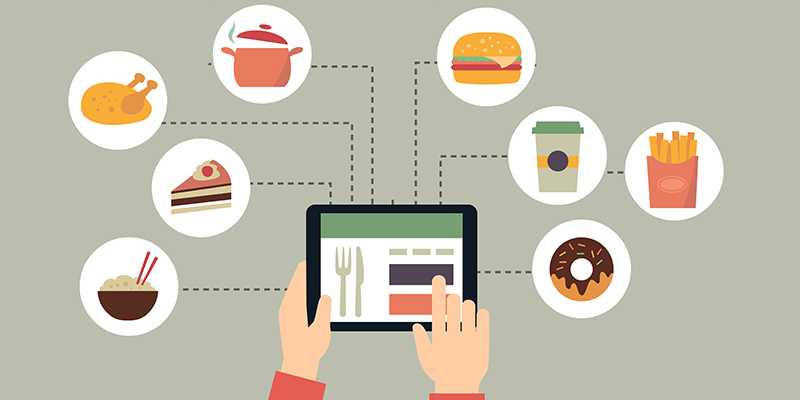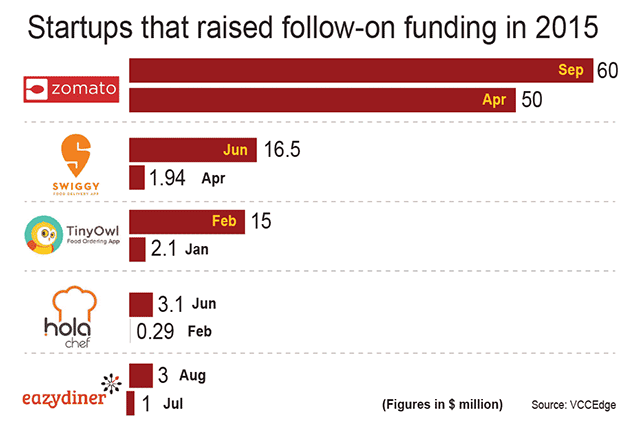
“India is not simply emerging, it has emerged,” said US President Barack Obama. The entire startup ecosystem in India has changed tremendously over the past ten years. People now opt for the road not taken; they have shunned the conventional jobs by pursuing out of the box ideas as their career choices.
Off late, the trend of food startups and online grocery has been catching the spotlight. India seems to be having a growing appetite for such startups. “Eating out” is out, “ordering in” is in. In this new convenience economy, the restaurant industry is learning to cope with this change with a host of startups providing new ways of delivering food to customers on demand. Investment has predictably followed: startup analytics firm Tracxn showed that in 2015, 31 food-tech startups in India raised over $160 million, compared to $67 million in 2014.
Food tech is a vast market and food delivery startups are just a part of it. The market can be categorized in multiple ways. From an end consumer perspective, we can categorize it in the following three simple categories:
Discovery:
- Restaurant to go to (ex: Zomato)
- Dish one wants to eat (ex: Quinto)
- Chef and make a reservation with him/her to come & cook at home (ex: ChefHost)
- Deal or coupon (ex: MeDine)
OTT or Convenience Services
- In restaurant payments (ex: Momoe)
- In restaurant ordering
- Table booking at restaurants (ex: DineOut)
Delivery:
- Of grocery at home (ex: BigBasket) (this is also considered vertical e-commerce)
- Of recipe box at home (ex: HalfTeaSpoon)
- From internet only/first restaurants/food ordering platforms – and this is what we are exploring today.

Till a while ago, food enthusiasts would wait for annual food guides and eating-out directories of restaurants. These publications had expert reviews, opinions and vital information to dine in the city and were pretty much the epitome of lifestyle.
2006 saw a significant change in the landscape with the launch of Burrp, who could be credited as the pioneer in the food-tech space. This was the first time a company was trying to bring technology to the restaurant-discovery space.
Modelled on the success of Yelp in the US, Burrp was very successful in its initial days. Its initial business model revolved around charging businesses a fee for premium listings, banners, affiliate ad revenues and a combination of SMS marketing. These were early days when smartphones weren’t as popular as they are today.
With a big push from smartphone-driven Internet growth, companies in the food-discovery space realized that these business models do not have the potential to scale up substantially. While many realized early on, several others dabbled and lost their edge.
Start-ups in 2012 started offering discount coupons, incentives with online-ordering services. While there were many smaller players who pioneered in this market, the sector was primarily led by Foodpanda. As per data compiled by Tracxn, there were 335 online ordering start-ups in India at the end of 2015.
This was the first time that companies were focusing on enabling transactions in the industry. Many strong food-discovery players, for different reasons, missed being part of the evolution from listings to transactions, including Burrp.
Fund-Hungry

Over the past one year, there has been an exponential growth in the number of food startups. This area is garnering investors’ interest, so much so that the market size of food in India is expected to reach Rs. 42 lakh crore by 2020, reports BCG. Presently, the Indian food market is around Rs. 23 trillion.
| COMPANY | AMOUNT RAISED TILL DATE |
| HOLACHEF | USD 320K |
| SPOONJOY | UNDISCLOSED |
| iTIFFIN | USD 1 MILLION |
| TINYOWL | USD 20 MILLION |
| FAASO’S | USD 20 MILLION |
| FOODPANDA | USD 147.3 MILLION |
| EATLO | NO FUNDING |
| TASTYKHANA | USD 5 MILLION |
| JUSTEAT | USD 89.1 MILLION |
| DELIVERYCHEF | UNDISCLOSED |
| BITE CLUB | USD 500K |
The above table, names of those food startups have been mentioned which have caught investors’ attention lately. But then there are innumerous food startups functioning, which still haven’t grabbed the limelight.
While these are only the newbies in the online food delivery industry who have raised investments, off late, the already established ones have started carving out a bigger piece of the pie for themselves. It started with FoodPanda gobbling up its biggest rivals in the country, Tastykhana and JustEat. And now Zomato too ventured into food ordering and delivery services.
Additionally, in an interesting twist of events, businesses from different niche have also decided to experiment in this lucrative business. Just-Dial made its way into online food ordering service and cab aggregator Ola has entered this segment with the launch of its food delivery service in 4 cities.
What next for food-tech ?
These are still early days for food-tech. India’s food services market is vibrant and worth $48 billion; of which the organised food services market is valued at $14 billion and this is growing at over 25 percent. Food is over half of the consumption basket and demographics are bringing a change in consumer tastes and behavior. Why wouldn’t an investor see an opportunity?People cite that funding crunch and the recent breakdown has raised concerns over this sector, but this is only a natural thing to happen in a growing industry. The food-tech ecosystem hasn’t evolved yet, however it has grown much faster than what many players were anticipating. Food-tech will mature, but this will also mean that many apps and websites will shut-down and only serious players will stay.
The Co- business head of Burrp says ‘Companies that are being funded aren’t funded for the right reasons. Today, a bar conversation between two VCs revolves around how many start-ups either of them have funded, or whether they have a food start-up in their portfolio. A mere portfolio-risk approach towards investing will not last.’
So there is a need for more serious conversation, where the investment process is so rigorous that VCs are able to identify early winners in the space and back them whole-heartedly so they last. Investors need to find partners, customers, be in sync with the core team and guide them. 2015 briefly saw a breakout from the usual pattern of backing teams with vision versus the idea. This will change in the next 2-3 years.
Entrepreneurs on the other hand need to be more serious about their businesses and identify real problems than follow the herd. Food-tech is a tale about the perfect marriage between the merchant and the customer. There has to be a fine balance between both. Well-funded start-ups need to slow down to build the right systems, processes and identify young leaders in the team.
This article was written by Varnita Deep (PGDM, Batch 22, XIME-B)